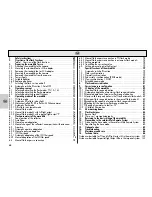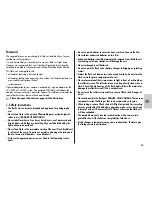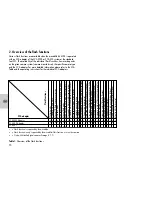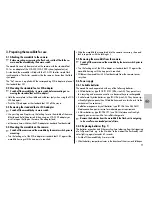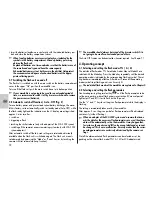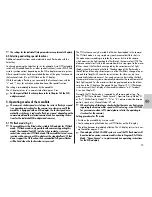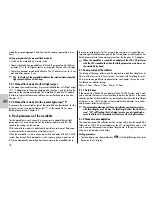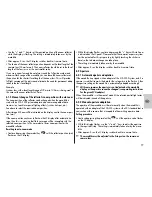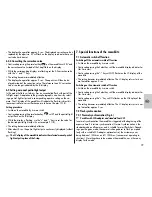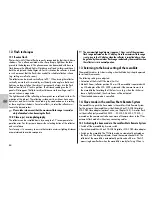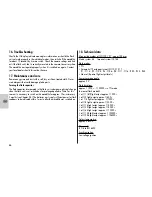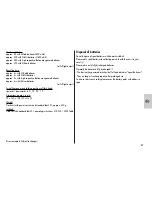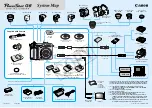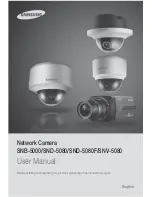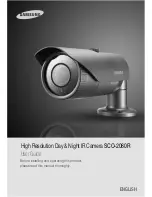
73
ķ
The settings for the individual flash parameters are explained in Chapter 6.
4.3 Selecting and setting special functions
Additional special functions can be selected in each flash mode with the
Select key.
Continue depressing the Select key to set, for example, Auto-OFF (automatic
switch-off), Extended Zoom Ex or other special functions (such as REAR, 2nd
curtain synchronisation), depending on the SCA adapter or camera system.
After a special function has been selected the icon of the given function and
the functional status (On or OFF) flash on the LC display.
While the display is flashing, you can modify the functional status with the
“+” and “-” keys, for activation or deactivation of the special function.
The setting is immediately taken over by the mecablitz.
The LC display returns to its normal state after approx. 5 sec.
For the special flash functions please refer to Chapter 7 of the SCA
adapter manual.
5. Operating modes of the mecablitz
The camera’s shutter speed must always be set to its flash sync speed
(see operating instructions for the camera) or a slower speed. If the
mecablitz is equipped with an SCA adapter, the shutter speed auto-
matically switches or is reduced to flash sync speed, depending on the
camera model and the selected camera mode (see operating instruc-
tions for the individual SCA adapter and camera).
5.1 TTL flash mode (Fig. 3)
The mecablitz must be fitted with a suitable SCA adapter for TTL flash
mode. TTL flash mode is only possible with cameras supporting this
mode! The standard foot 301 (only hot-shoe contact or sync cord
socket) does not permit TTL flash mode. If the mecablitz is used in con-
junction with a camera or SCA adapter or the standard foot 301 that
do not support the TTL function, then uncontrolled full-power flashes
will be fired when the shutter release is pressed!
☞
☞
☞
☞
The TTL function can only be tested if a film has been loaded in the camera!
The TTL flash mode is a very simple way to achieve excellent flash shots. In
this mode exposure readings are taken by a sensor built into the camera
which measures the light reaching the film through the camera lens (TTL). The
electronic control circuit within the camera transmits a stop signal to the meca-
blitz as soon as the film has been exposed by the correct amount of light,
thereby instantly interrupting the flash. The advantage of this flash mode is
that all factors influencing correct exposure of the film (filters, change of aper-
ture and focal length with zoom lenses, extensions for close-ups, etc.) are
automatically taken into account. You need not worry about setting the flash,
the camera’s electronic system automatically determines the correct amount of
flash light required. For the maximum flash range please observe the distan-
ces given in the LC display of the mecablitz (see Chapter 10.1). If flash expo-
sure was correct, the LC display of the mecablitz indicates “o.k.” for about
3 sec. (see Chapter 9).
Normally, the TTL flash mode is supported by all camera modes (e.g. Pro-
gram “P” (Full Auto Mode or “Green Square”), Aperture Priority Mode (“A”
or “Av”), Shutter Priority Mode (“T”, “Tv” or “S”), picture modes (landscape,
portrait, sports, etc.), Manual Mode “M”, etc.
When selecting a film please check whether there are any limits given
regarding the maximum film speed or ISO value (e.g. max. ISO 1000)
for your camera when in TTL mode (please refer to the operating in-
structions for the camera).
Setting procedure for TTL mode
• Switch on the mecablitz by its main switch.
• Continue depressing the Mode key until TTL flashes on the LC display.
• The setting becomes immediately effective. The LC display returns to its nor-
mal state after approx. 5 sec.
If an adapter of the SCA 3002 system is used, the TTL flash mode will
be activated on various camera models when in Program P, Full Auto
Mode, “Green Square”, or a picture mode (see operating instructions
for the SCA adapter).
☞
☞


